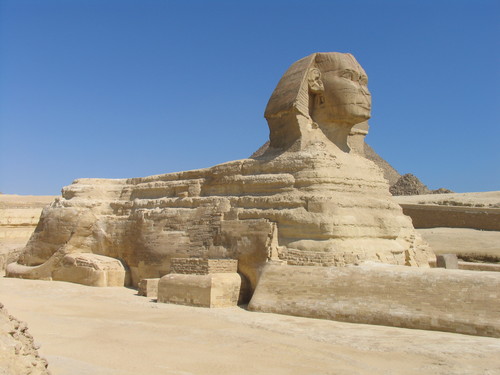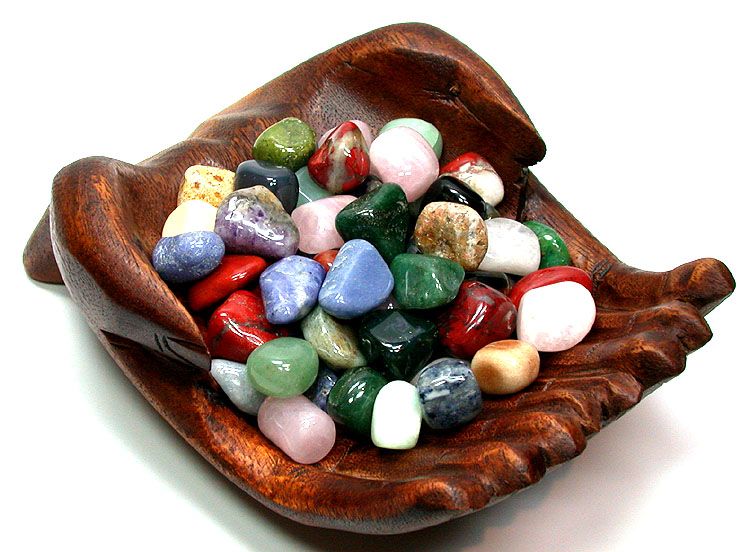The Ancient Egyptian Sphinx
- Details
- Written by AndEl

The Ancient Egyptian Sphinx
Unlike the ancient Greeks who described their sphinx as a female, ancient Egyptians often depicted it as a male. The most famous among the ancient Egyptian sphinxes is the Great Sphinx of Giza. Let us take a look at some sphinxes of ancient Egypt.
The name 'Egypt' brings with it images of pyramids and sphinxes. The sphinx is one of the main landmarks of this country of vast deserts and the great River Nile. The concept of the sphinx first originated in Egypt and later spread to other parts of the world. The Greek version of the sphinx is a female monster with a feminine face, breasts, wings and a tail.
According to ancient Egyptian mythology, the sphinx was a creature with a human head and the body of a lion. But sphinxes with the head of a ram, falcon and hawk are also seen in the country. Most of them are depicted as male, but there are a few exceptions. The sphinx was considered to be the guardian of royal tombs or temples by the ancient Egyptians and therefore placed in the vicinity of these structures. The face of a sphinx usually portrays a pharaoh, as he is supposed to be an incarnation of the sun god.
The Sphinxes of Ancient Egypt
The concept of sphinx originated from the Old Kingdom of Egypt. The first of its kind was made during the reign of the Fourth dynasty rulers, who ruled from 2723 BCE to 2563 BCE. It is believed that this sphinx portrayed Queen Hetepheres II of the same dynasty. Now this sphinx is kept in the Cairo Museum, Egypt.
Famous Egyptian sphinxes include the granite sphinx of female Pharaoh Hatshepsut, which is now preserved at the Metropolitan Museum of Art, New York. Other sphinxes found in the temple complex at Karnak in modern-day Luxor, had the head of a ram (male sheep). There are said to have been 900 such sphinxes found in the temple of god Amun. These sphinxes were built by King Ramesses II. A statue of this king can be seen between the paws of these sphinxes. Perhaps, the most striking of all the ancient Egyptian sphinxes is the Great Sphinx of Giza.
Among the numerous Egyptian sphinxes, the largest, oldest and most famous one is the Great Sphinx of Giza. It is situated on the Giza plateau, on the outskirts of Cairo and is part of the ancient pyramid complex at Giza. The sphinx of Giza, which is 73.5 meters long, 6 meters wide and 20 meters high, is the largest, single-stone structure in the world. Though there is no evidence pertaining to its age, many believe that it was constructed around 4,600 years ago. It is also said that the face of the Sphinx of Giza portrays the Fourth dynasty Pharaoh Khafra.
This sphinx faces east, where the Valley Temple of the pyramid complex of Khafra is located. The face is broad and square in shape, with a royal cobra emblem embossed on the forehead. Parts of head cloth can be seen behind the ears. Traces of paint near one ear show that it was colorful. Originally, the sphinx had a beard, which was excavated later and handed over to the British Museum, London. It is said that the sphinx lost its nose during a target practice by Napoleon's army. Another contention is that Turks were responsible for the dilapidated nose.
The head of the monument is 10 meters long and 4 meters wide. Its eyes are two meters high and mouth is two meters wide; the paws are 15 meters long. The body of this gigantic structure has paws, claws and a tail, just like a lion. It has a stone slab with some inscriptions between its paws. This slab was added to the original monument at a later stage by young King Thutmose IV. The inscriptions narrate a dream of the King (Thutmose); hence, the slab is called 'Dream Stela'. The three tunnels discovered in the sphinx lead nowhere. There are no chambers inside the structure.
The sphinx was carved out of a huge hill of limestone. The structure contained several strata of limestone. Compared to its body parts, the head was made of harder strata and so was more resistant to erosion. But the base formed the hardest part. As the body comprised of softer stone, it started wearing away right from the time of its construction. Strong desert winds and annual flooding of the River Nile led to the erosion of the structure. Constant winds buried the sphinx with sand many times over the years, so much so that it has remained under sand for much of its existence. It had to be dug out on numerous occasions. But, it is considered that the sand protected this monument from the harsh desert winds and natural calamities.
Till date, this sphinx has undergone restoration several times; importance is now given to its preservation, rather than excavation-related activities. After all, this national symbol of Egypt, represents the country's ancient history and heritage.
By Sonia Nair
Source Here
Liked this article? Dive deeper into personal growth and wellness! Check out CrystalWind.ca for spiritual wisdom or explore AromaWorx.ca for natural well-being tips. Spread the positivity—share this with friends on their happiness journey!
Let’s Chat! Drop Your Thoughts Below! ![]()
Latest Articles
Articles: Emerald Tablets
Articles: Feng Shui

Imagine a world of inspiration and healing, free for all—made possible by YOU!
Donate Now—Ignite the Magic at CrystalWind.ca!

Epilepsy - Finding A Cure
Your donation can make a difference!
Help us find a cure – donate now!
Unlock Your Light: Join Lightworkers Worldwide on CrystalWind.ca!
Articles: Alchemy
Articles: Ancient Egypt
Articles: Labyrinths
Articles: Pyramids
Articles: Superstitions
Follow Us!
Featured This Month
Watermelon Tourmaline
Synonym: Rainbow Tourmaline The watermelon tourmaline is a rare variety t... Read more
Sweet Violet
Sweet Violet Faithfulness and modesty. “I will always be true to you.” Helps... Read more
Virgo Mythology
The Virgo Myth In all of constellation mythology, few legends are as misund... Read more
Mabon in Modern Times: Fresh Takes on the Au…
The Mabon season begins somewhere around the 21st-22nd of September and cont... Read more
Crystals for Virgo
As the warmth of summer begins to soften into the crispness of autumn, the Sun... Read more
Peridot: The Healer's Stone
Peridot has been used as a Power Stone for centuries. Peridot fosters emotio... Read more
Sun in Virgo
An Overview of Sun Sign Characteristics for Virgo Virgo is guided by Mercur... Read more
Mabon Magic: Ideas For Fall Decoration And R…
Welcome (almost!) to Fall! We’re turning the Great Wheel once again, toward ... Read more
The Vine: September 2nd - September 29th
The Autumnal Equinox ( Alban Elfed ) Celtic Symbol : The White Swan Read more












































